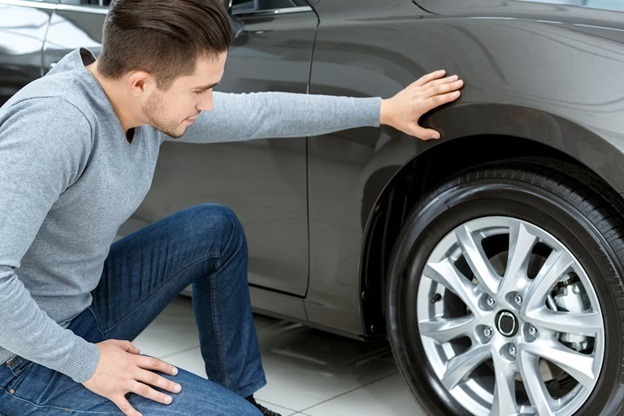Car tires belong to the so-called ‘consumables’, but in terms of cost, this is one of the most significant cost items for a car owner. Therefore, it is not surprising that any motorist strives to ensure that the set of new tires he has bought leaves at least the prescribed number of kilometers.
Especially if you care about the appearance of your car. And if for you the replacement of even rims seems like a waste, then the solution here may be their painting – a service available in many car repair service centers. An excellent example here is the car workshop Ecareauto, where you can not only change the color of the rims without excessive costs but also carry out a complete scan and diagnostics of the car, electrical repairs, and much more.
In principle, there are no secrets here, but certain rules must be followed.
Balancing
New wheels need high-quality balancing. And the equipment on which this operation will be carried out is essential. Therefore, it makes sense to turn to specialists working under a solid brand on expensive equipment. No one will be trusted with such equipment, therefore, the professional training of these tire fitting masters is at the appropriate level.
Tire masters recommend repeating this procedure every 5-8 thousand km, arguing that the rubber wears unevenly, and the wheels that regularly fall into road holes receive deformations invisible to the eye.
But these are general recommendations, to which you should add the driving style, experience, and features of the car itself, as well as the tires and wheels installed on it. So, if it is desirable for a sports car to drive in for balancing regularly, the truck owner can perform this procedure much less frequently.
Tire pressure
The next factor that has a direct impact not only on the tread wear rate but also on road safety, is the maintenance of a given tire pressure. Check the pressure in the wheels regularly and, of course, before a long trip. Remember to check the pressure on a cold tire before driving!
The recommended pressure for your car is indicated on a special sticker near the driver’s door. This is the optimum pressure to be maintained during normal operation. At the same time, you can reduce the pressure on the wheels to overcome difficult areas with loose sand or snow. To do this, the wheels are lowered by about half, and you can only move at a low speed.
Running gear malfunctions
Of course, the serviceability of the running gear of the car directly affects the durability of tires. In essence, all chassis malfunctions come down to replacing failed parts, followed by adjustment of the camber-toe of the steered wheels on a special stand. In addition, alignment adjustment may be required without replacing defective parts, after a hard impact, if there was a breakdown of the suspension or deformation of the discs, for example.
By the way, significant deviations from the wheel alignment prescribed by the manufacturer affect not only the life of the tires, but also the stability of the car on the road, and, consequently, safety.
Seasonal tire storage
Those who operate the car all year round need not be told about the need to use two sets of tires for different seasons. But with their storage, there are many questions. In order for the rubber not to dry out, and the frame not to receive residual deformations, you must adhere to the following rules:
- Wheels and tires should be stored in a dry, cool, dark place. It is dangerous for a tire to get gasoline, grease, and chemicals on it, as these substances destroy rubber and greatly reduce its service life.
- Tires should be stored upright, but not suspended.
- The support can be a plane, and preferably a semicircular surface, providing less deformation of the tire.
- To avoid residual deformation, the tire should be rotated every two to three months, changing the bearing area.
- Store tires stacked, i.e. one on the other, you can’t. Under the influence of gravity, the tread of the tires located below is deformed.
- It is impossible to store assembled wheels “standing up”, it is better to hang them by the disk.
- If the tires are chambered, then the pressure in them should be minimal so that the tire does not “inflate”, i.e. does not deform.
- Separately stored cameras also need to be slightly inflated and stored on brackets with semicircular surfaces.
Tire storage in specially equipped rooms is now offered by many large service stations. At first glance, such a service may not seem particularly important and not so necessary. But service experts recommend storing tires not at home or in a garage, but in a specially equipped warehouse, where all the conditions for protecting rubber from temperature and humidity changes are created.

